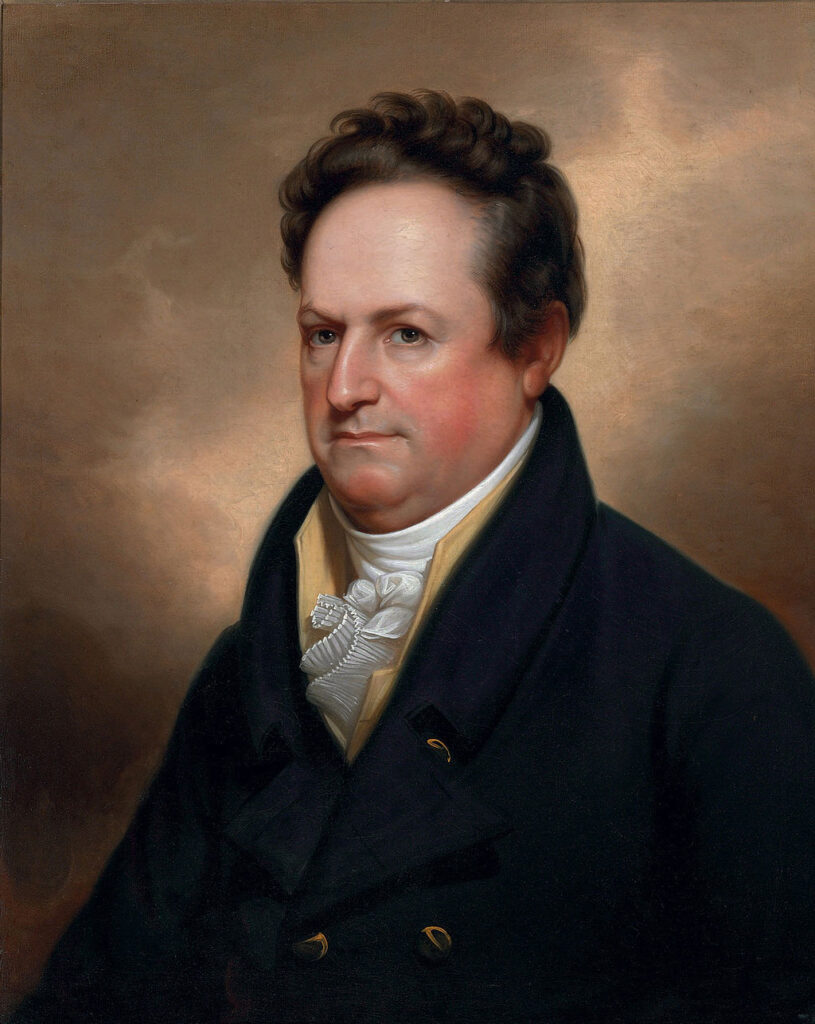One of Early America’s Engineering Marvels
One of the Academy’s earliest Honorary Members had an immense impact on transportation and economics in the United States during the 19th century.
Published March 26, 2025
By Nick Fetty
Digital Content Manager

DeWitt Clinton, one of The New York Academy of Sciences’ earliest Honorary Members, had a significant political, economic and social impact on New York City and state, though his contributions reverberated across the country.
Clinton was born in Ulster County, New York in 1769 to a father who served as a general during the Revolutionary War. He attended King’s College (now Columbia University) and upon graduation pursued a brief career in law. He eventually shifted his focus to politics.
Practicing Politics
Despite his first two political campaigns ending in defeat, Clinton persisted and was eventually elected to a seat in the New York State Assembly, the lower chamber in the state’s bicameral legislature. He moved up to the New York State Senate (the upper chamber) before being elected to the U.S. Senate, though this appointment was short-lived because months later he was elected mayor of New York City.
Clinton spent nearly 10 years as the city’s chief executive. During his tenure he advanced for public education and established various public-welfare institutions. He then rose to the governor’s office, serving as the state’s top executive for nearly another 10 years before his death in 1828.
Clinton’s political ambitions were strong but his attempt at reaching the highest office in the land, the presidency, fell short. Running on the “Fusion” party ticket, Clinton was defeated by James Madison 128 electoral votes to 89 electoral votes in the 1812 election. Much of Clinton’s support came from antiwar states in the North.
His Lasting Legacy
Perhaps the most impactful part of Clinton’s legacy was the role he played in the development of the Erie Canal. When construction on the canal began in 1817, the United States was relatively young. The transcontinental railroad had not yet been completed and much of the Midwest was considered the frontier.
The 363-mile canal route traversed from the New York Harbor up the Hudson River to Albany and then west to Buffalo. From there, ships could navigate through the Great Lakes, using a series of locks and dams, eventually reaching Chicago at the westernmost terminus. The canal was completed in 1825.
The Erie Canal was considered an engineering marvel and had an immeasurable economic impact on the burgeoning United States. It enabled development of the sparsely populated states in the Midwest and allowed crops and natural resources from the heartland to be transported faster and more efficiently than over land.
Much of the land was cleared with a combination of manpower, beasts of burden, and gun powder. The original canal was roughly four feet deep and 40 feet wide. Today, tourism is the main source of boat traffic along the canal.
An Appreciation for the Arts and Sciences
In addition to his involvement with the Erie Canal project, Clinton was also known for having a deep appreciation for the arts, sciences, and other educational matters. He led efforts to combat the spread of yellow fever and supported organizations like the Free School Society (which later became the city’s public school system), the American Academy of Fine Arts, the New-York Historical Society, and the Literary and Philosophical Society.
During his lifetime he “published many articles that were well received.” He was elected a fellow of the American Academy of Arts and Sciences in 1816 and was named an Honorary Member of The New York Academy of Sciences in the early 19th century.
Also read: A Pioneer in Pap Smears and Cancer Research
This is part of a series of articles featuring past Academy members across all eras.
